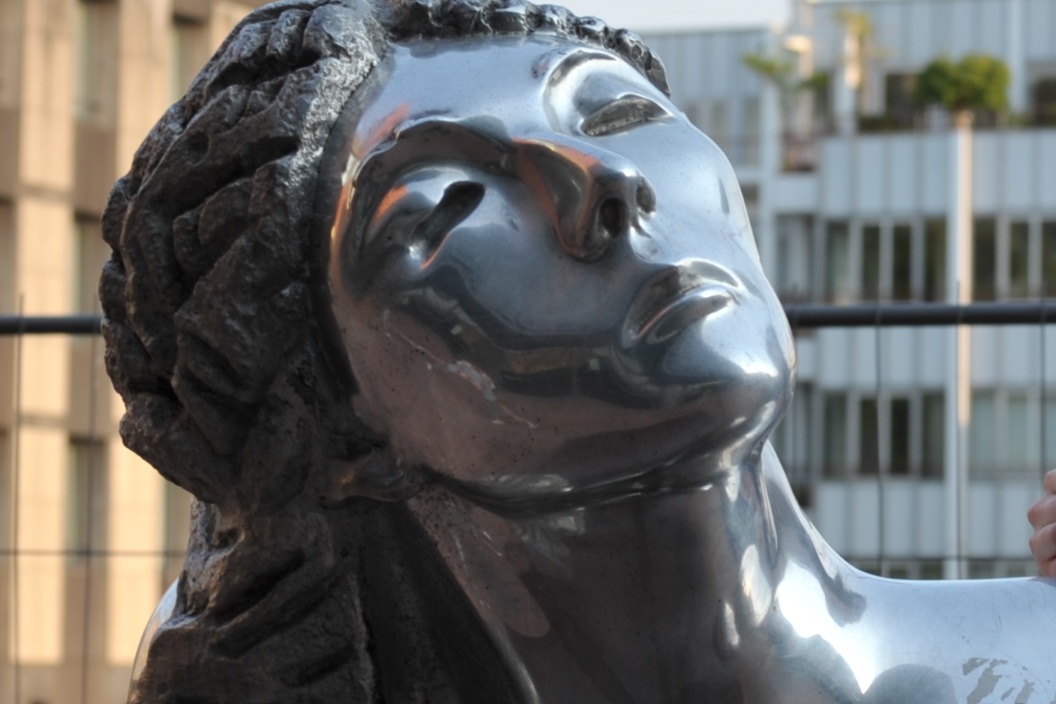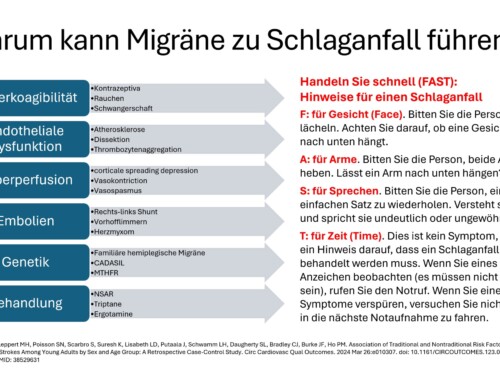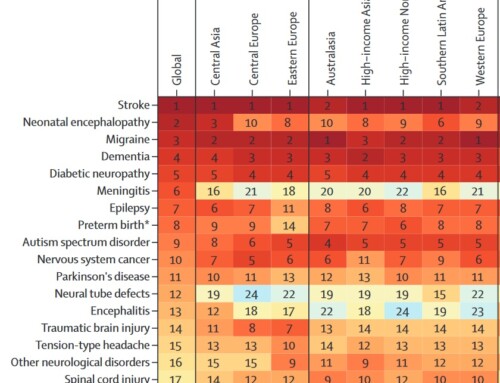Headache due to inflammation of the nose and paranasal sinuses (rhinosinusitis)
The nose is blocked. The nose is running. There is watery secretion or thickened, tough mucus in the tissue. You feel pressure around the eyes, in the upper jaw and in the forehead area. Head movements increase the pain. You feel cold. A feverish feeling, sore throat, cough and fatigue can accompany the symptoms. If you bend your head forward, the pain increases.
These are symptoms that may correspond to sinusitis headache. The word “sinus” means bulge or cave. This refers to inflammation of the nose and paranasal sinuses, which can be responsible for headaches in the event of an acute infection. Scientifically, this headache is called “headache attributed to rhinosinusitis”, or in short “sinusitis headache”. It is classified in the International Headache Classification under code 11.5 and in the International Classification of Diseases (ICD-10) under code G44.845.
In practice, sinusitis headaches are often confused with migraines or tension headaches. It is very important to identify and accurately classify the headache in everyday life so that specific treatment can be initiated if possible. The diagnostic criteria for headache in rhinosinusitis are set as follows:
A. Frontal headache accompanied by pain in one or more regions of the face, ears, or teeth and meeting criteria C and D
B. Acute rhinosinusitis or an acute exacerbation of chronic rhinosinusitis has been demonstrated clinically, by nasal endoscopy, CT or MR imaging, and/or laboratory evidence
C. The headache and/or facial pain develop simultaneously with the onset of acute rhinosinusitis or the acute exacerbation of chronic rhinosinusitis
D. Headache and/or facial pain resolve within seven days of effective treatment or remission of acute rhinosinusitis or acute exacerbation of chronic rhinosinusitis
Clinical symptoms that indicate inflammation of the nose or paranasal sinuses include, in particular, accumulation of pus in the nasal cavity, obstruction of the nose, fever, a reduction in the sense of smell or a complete inability to smell. Migraines and tension-type headaches can be confused with a sinusitis headache due to the similarity in pain location. A subgroup of patients who meet the criteria for migraine without aura also have additional signs such as facial pain, nasal congestion, or attacks triggered by changes in the weather. However, these patients do not have purulent discharge from the nose or other signs of acute rhinosinusitis.
The most important basis for differentiation is evidence of acute rhinosinusitis such as purulent secretion from the nose, sore throat, fever and cough. In addition, sinus headaches are usually not accompanied by nausea or vomiting, nor are they aggravated by noise or light, so they do not have the typical accompanying symptoms of migraine attacks. With these features, it should be possible in everyday life to distinguish sinus headaches from migraines or tension headaches.
frequency
Rhinosinusitis is widespread. The diagnosis of “acute sinusitis” is made over 6 million times each year and the diagnosis of “chronic sinusitis” around 3 million times. It is a disease with high and increasing frequency. Bronchitis often occurs with sinusitis and vice versa.
causes
Rhinosinusitis can be caused by viral infections, allergies, bacterial infections, a reduced immune system, or structural changes in the nasal cavity. Local inflammation and changes in pressure conditions in the nose and paranasal sinuses can cause headaches. It is certain that headaches develop in acute rhinosinusitis. In chronic sinusitis, on the other hand, the cause of headache or facial pain is not clear unless there is an overlying acute outbreak of acute sinusitis. Sinusitis can affect anyone. The likelihood of developing sinusitis may be increased if you have conditions such as asthma, nasal polyps, allergies (especially to house dust or pollen), a weakened immune system or other illnesses.
If the symptoms last longer than ten days, the headache becomes very severe, the chosen self-medication does not help sufficiently or a fever of over 38° Celsius occurs, you should seek medical treatment.
diagnosis
First and foremost, the symptoms of acute rhinosinusitis are examined. The examination may reveal evidence of a sensitive forehead and maxillary sinus region. An endoscopic examination analyzes a narrowing of the nasal passage. Evidence of a bacterial or fungal infection can be obtained through mucous membrane swabs. In individual cases, imaging examinations such as a computer tomogram or a magnetic resonance tomogram can also be carried out. As a rule, the diagnosis does not require any additional medical examinations. It can be posed clinically.
Origin
In healthy sinuses, secretions and mucus are drained away and the air we breathe can circulate freely through the nasal passage. However, if the sinuses are acutely inflamed, these areas become narrowed and blocked, meaning that secretions and mucus cannot be drained away. If this is the case, bacteria, viruses and fungi can spread and multiply quickly in the nasal mucus. Although acute viral infections are very often the cause of acute sinusitis, any condition that impedes the drainage of secretions and mucus can lead to sinusitis.
Treatment
If you have acute bacterial rhinosinusitis, your doctor may prescribe antibiotics. If acute rhinosinusitis is caused by allergies, the doctor may initiate treatment with corticosteroid nasal spray or tablets.
Acute headaches can also be treated with painkillers such as aspirin, paracetamol or ibuprofen. Decongestant nose drops and saline rinses can relieve symptoms.
In order to treat the cause and prevent chronic sinusitis, treatment should be based on liquefaction of the mucus (secretolysis) and on the mobilization of the mucus by reducing mucus viscosity (mucolysis). In addition, activating the cilia movement should enable improved removal of mucus. The cause of sinusitis headaches can therefore be eliminated through secrotolysis and mucolysis, as well as through improved secreto-motor function. The anti-inflammatory, antispasmodic and antimicrobial effects of the therapy lead to a reduction in inflammation of the mucous membranes and thus also eliminate the headaches.
prevention
To reduce the risk of acute rhinosinusitis, the following precautions should be taken to maintain the health of the sinus mucosa:
1. Wash your hands frequently: Washing your hands after frequent contact with many other people can help reduce acute sinus infections. An annual flu vaccination can also help prevent the occurrence of an acute flu infection.
2. Avoid irritation of the sinus mucus: Most important rule: Don't smoke! You should also not be in areas where there is smoking. You should provide fresh air and ventilate often. Air pollution and dry air lead to swelling of the sinus mucosa and promote acute sinus infections.
3. Make sure there is sufficient air humidification: Adding moisture to the room air through air humidification measures can be effective in preventing sinusitis. Excessive room temperatures should be avoided.
Warning Symptoms/Precautions
You should see a doctor if you have the following headache symptoms:
– Headaches like never before: If you have a sudden and very severe, previously unknown headache, you should consult a doctor immediately.
– If you have a history of recurring headaches, but an unusually severe headache suddenly occurs, you should also see a doctor.
– For newly occurring headaches over the age of 50
– Headaches that are accompanied by accompanying disorders such as memory loss, difficulty concentrating, balance problems, dizziness, changes in speech, visual disturbances, weakness, etc., a doctor should be consulted.
– Headache accompanied by fever, severe neck pain, neck stiffness, severe nausea and vomiting
– Headache accompanied by eye redness, tearing and other symptoms.










Hello, I'm in Sinzig Rhineland-Palatinate
I've had sinusitis symptoms for several weeks, I've had operations 3 times and it's not possible between the hospital and the ENT doctor I'm only at home I can't go to work I don't know what to do next I've already been through a lot :(
When I was 24, I had a broken nose that didn't heal properly because someone accidentally bumped into my nose after four days.
For a long time I had some blood and pus on my pillow in the morning. The doctor found nothing at the time. Now I'm 84 (!) and the symptoms still occur periodically. Douches can help, but you have to bend your head forward, otherwise they won't help.
The mucous membranes are dry and thin, mucus only comes out after rinsing, sometimes it is quince yellow. Further complaints occurred: facial pain, vertigo. The facial pain disappeared when I started rinsing so that the fluid ran into the frontal sinuses (this is extremely painful, but only for a short time.) Hearing loss and chronic bronchitis also occurred. The tiredness is often so intense that you feel like you can practically fall asleep while walking outside. Is there another type of treatment here?
I never got antibiotics. H. Chickens